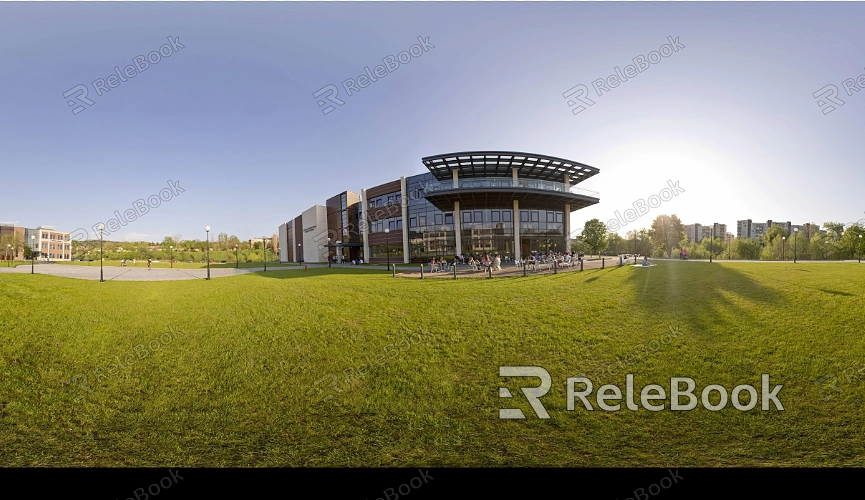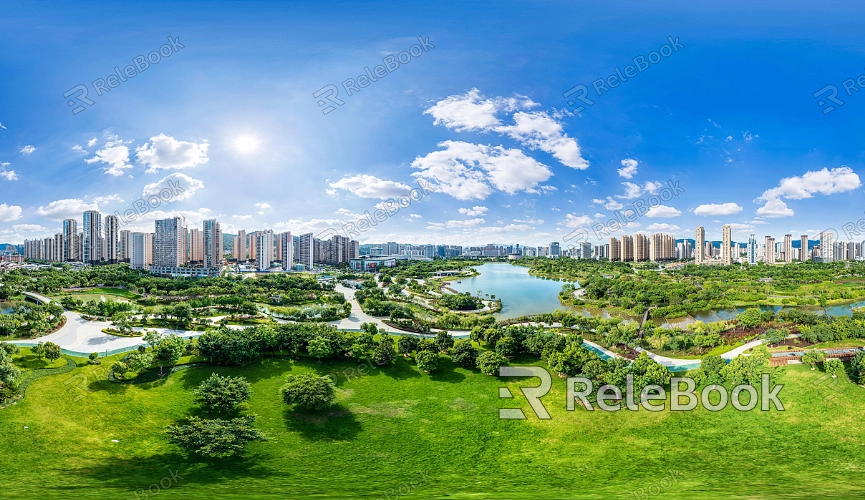How to Blend Grass HDR Textures with Other Landscape Textures
When creating natural landscapes in 3D design, blending grass textures with other landscape elements is a common challenge. Designers need to ensure that different textures transition smoothly and realistically to maintain visual consistency. Whether you're working in Blender, 3ds Max, Cinema 4D, or other rendering tools, this issue frequently arises. In this article, we’ll explore techniques for seamlessly blending grass HDR textures with other landscape textures, helping you enhance the realism and aesthetic appeal of your scenes.

1. Importance and Characteristics of Grass HDR Textures
Grass HDR textures play a crucial role in modeling natural environments. They not only offer high dynamic range lighting effects but also add depth and realism to the scene. Compared to standard textures, HDR textures provide richer contrast between light and shadow, making the details of grass textures more lifelike. To blend grass seamlessly with the overall landscape, it’s important to understand its key characteristics:
Realistic Light Reflection: Grass HDR textures capture and replicate natural light variations, such as sunlight and moving shadows, which is essential for dynamic scenes.
Fine Color Gradients: HDR textures offer a more nuanced range of colors than low-dynamic-range textures, which is critical for smooth blending.
2. Fundamental Principles of Texture Blending
To achieve a natural transition between grass and other landscape elements, understanding the basics of texture blending is key. The process typically involves gradients, masking, and detail adjustments to ensure there are no harsh edges between materials, resulting in smooth transitions.
Use of Gradient Textures: By applying gradient textures between grass and other elements (like rocks or sand), you can create a smooth visual transition. The gradient can range from color to transparency, ensuring both textures merge naturally at their borders.
Masking Techniques: Masks allow selective control over which areas display grass and which show other textures. Adjusting the opacity and feathering the edges of the mask can enhance the blending effect.
3. Handling Different Landscape Textures
When blending grass textures, other landscape elements (such as rocks, water, or dirt) need careful treatment. Each texture type has unique properties, and it’s essential to account for these differences during blending.
Blending Grass with Rock: Rocks generally have a hard surface, while grass appears softer. Transition areas should be carefully handled, gradually reducing the grass coverage and revealing the details of the rocks. This can be achieved using gradient masks or by adding moss textures for a more natural look.
Blending Grass with Water: The transition between water and grass tends to be smoother. Lowering the transparency of the grass texture can allow the reflective qualities of the water to shine through, while still preserving grass shadows and reflections.
4. Combining HDR and Non-HDR Textures
In some cases, designers may need to blend HDR textures with non-HDR ones. Achieving a seamless fusion requires several techniques:
Consistency in Lighting: HDR textures provide a broader range of lighting, while non-HDR textures have a limited dynamic range. To blend them, adjust the lighting and exposure of non-HDR textures to match the HDR ones, preventing noticeable differences in brightness.
Color Correction: The color profiles of HDR and non-HDR textures can differ. Using color correction tools, such as hue and saturation adjustments, ensures that the textures appear visually cohesive.

5. Matching Detail and Resolution
To create a seamless blend, matching the resolution and level of detail between textures is crucial. Grass textures and other landscape textures should align in their detail quality to avoid unnatural-looking results.
Resolution Adjustment: Make sure that all textures have similar resolutions. If the grass texture is too detailed and other landscape textures are blurry, the difference will be visually jarring.
Detail Optimization: Adding detail layers, such as normal maps or bump maps, can enhance the realism of less detailed textures, making them better match the intricacy of the grass texture.
6. Utilizing Texture Blending Tools in Rendering Engines
Modern rendering engines, like Cycles, V-Ray, or Arnold, provide advanced tools for blending textures. These features allow designers to control the transitions between grass and other landscape textures more easily.
Material Blend Nodes: In Blender’s Cycles engine, material blend nodes make it simple to merge two textures seamlessly. Adjusting the blend weight controls the influence of each texture on the final appearance.
Layered Materials: In some high-end rendering engines, you can stack grass HDR textures with other landscape textures using layered materials. By adjusting the transparency and detail of each layer, you can achieve more complex and rich visual effects.
7. Avoiding Repetitive Patterns
When working with large-scale environments, repetitive patterns in grass or other landscape textures can break the illusion of realism. Avoiding repetition is a key concern for designers handling extensive areas.
Randomizing Texture Patterns: By introducing random patterns or noise effects, you can reduce the visible repetition in textures. Many 3D software applications offer randomization tools to help blend large areas more naturally.
Adding Subtle Variations: Overlaying extra details, such as vegetation, small rocks, or debris, helps break up the repetition of both grass and landscape textures, making the scene more varied and lifelike.
Through these techniques, designers can effectively blend grass HDR textures with other landscape elements in 3D scenes, resulting in more convincing and immersive environments. If you’re searching for high-quality HDR images, 3D textures, SketchUp models, or 3ds Max models, Relebook offers excellent resources. Download textures and models from Relebook and import them into 3D Max to significantly enhance the quality of your work.

